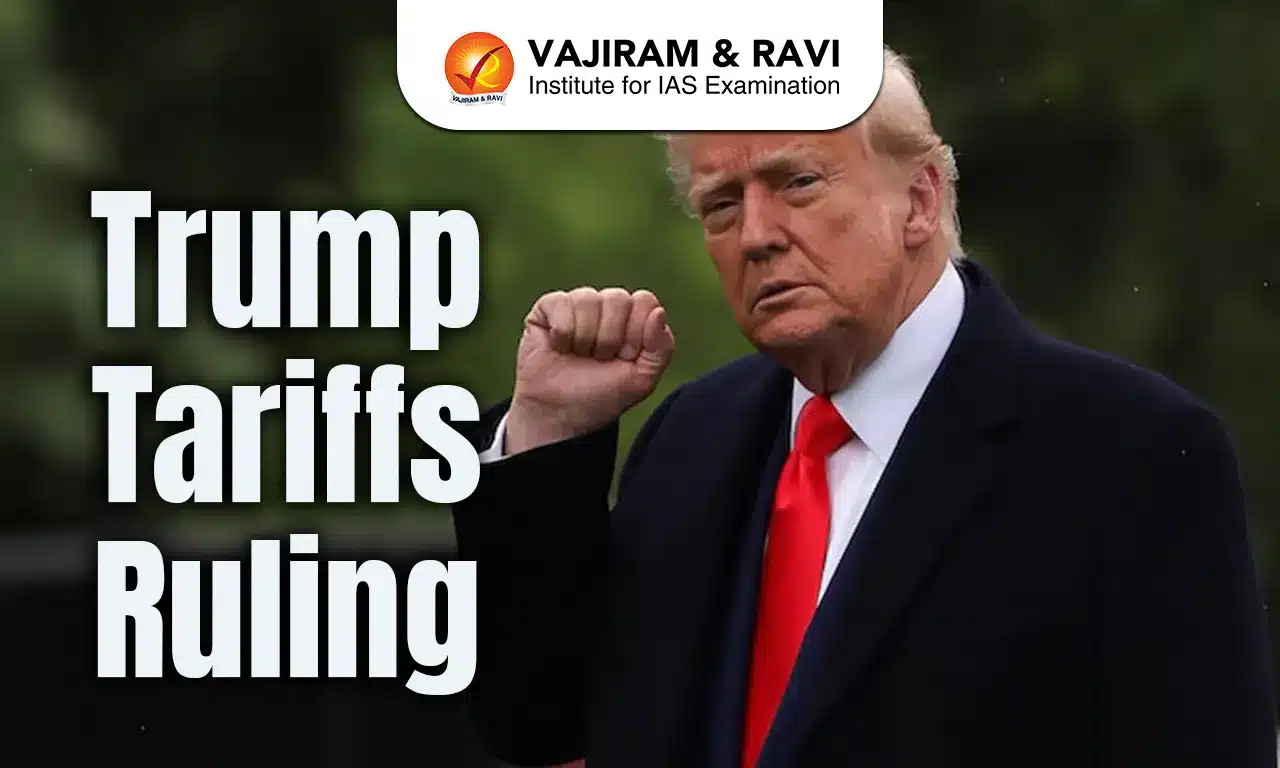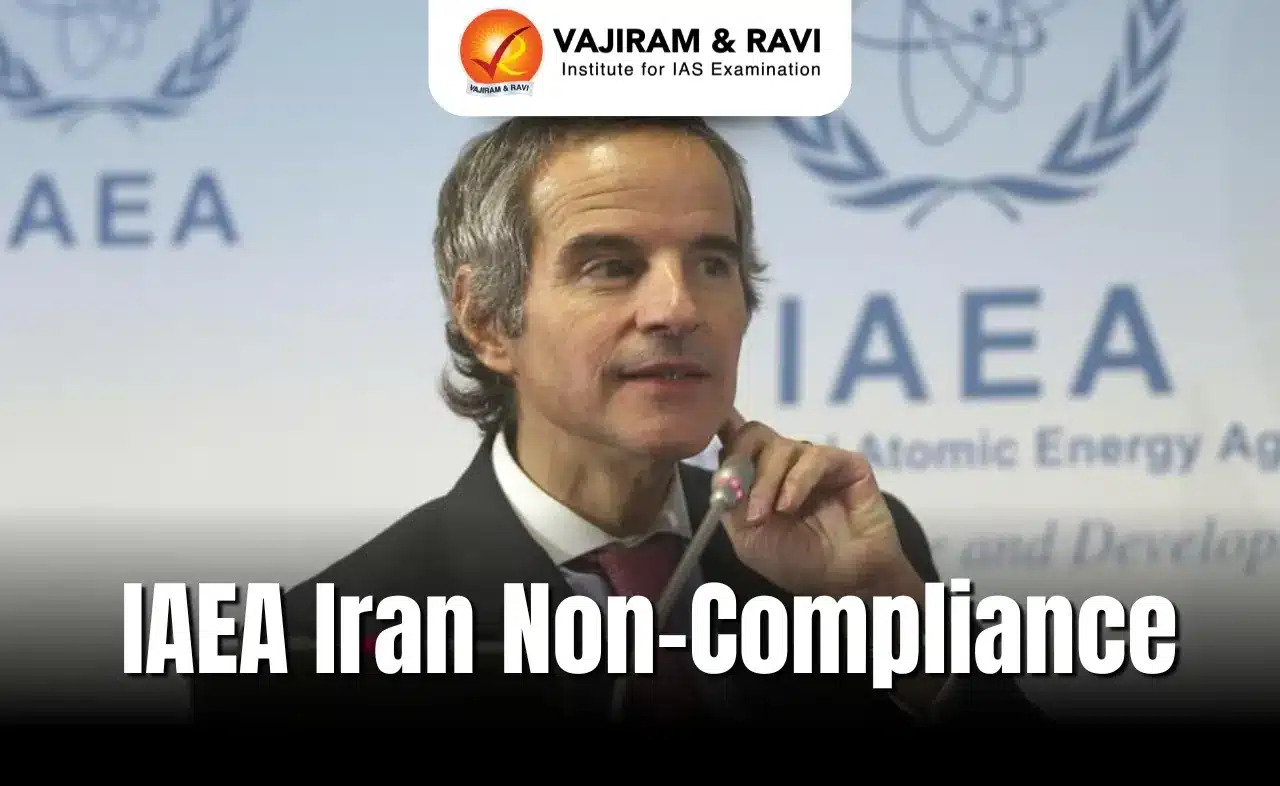Trump Tariffs Ruling Latest News
- A U.S. court ruled that President Donald Trump exceeded his authority by imposing tariffs on various countries under the 1977 International Emergency Economic Powers Act (IEEPA).
- The Court of International Trade stated that Trump’s April 2 tariffs, announced on what he called “Liberation Day,” were not justified under the emergency law.
- The ruling also struck down earlier tariffs on Canada, Mexico, and China, concluding that the government misused the IEEPA to justify the trade measures.
U.S. Court of International Trade (USCIT): Role and Standing
- The USCIT provides a dedicated judicial forum for civil cases related to import transactions and international trade.
- It ensures consistent and uniform interpretation of trade laws across the country.
Jurisdiction and Authority
- Under the Customs Courts Act of 1980, the USCIT holds exclusive jurisdiction over civil actions against the United States, its officers, or agencies, arising from laws governing international trade.
- It can hear cases from any part of the country.
Historical Evolution
- The court traces its roots to 1890, when Congress authorized the appointment of nine general appraisers to oversee merchandise valuation at key ports.
- Initially administrative, their role evolved over time into a judicial one, with progressively broader powers.
Structure and Appointments
- The USCIT consists of nine judges, appointed by the President and confirmed by the Senate.
- These judges serve lifetime tenures, reflecting the court’s status as an Article III federal court.
Challenge to Trump’s Tariffs under Emergency Law
- Twelve US states (including New York, New Mexico, Connecticut and Arizona) challenged the tariffs, as did five small businesses. The court combined the two cases.
Arguments by the States
- Tariffs financially burdened state governments.
- Tariffs did not specifically target drug cartels, despite this being a stated justification.
Core Legal Issue
- Whether the President’s use of the 1977 International Emergency Economic Powers Act (IEEPA) to impose tariffs exceeded the legal limits of emergency economic powers.
Court’s Focus
- Determining the scope of presidential authority under the IEEPA.
- Assessing if the tariffs aligned with the intended use of emergency powers.
Court Ruling on Trump’s Tariffs under IEEPA
- The U.S. Court of International Trade examined whether the International Emergency Economic Powers Act (IEEPA) of 1977 grants the President unlimited authority to impose tariffs on goods from nearly every country.
Court’s Ruling
- The court held that IEEPA does not confer such unbounded authority, and therefore struck down the challenged tariffs.
- It concluded that Trump’s actions exceeded the scope of authority delegated under the Act.
IEEPA’s Limitations and Historical Context
- The court noted that while the President’s economic powers expanded during the World Wars and the Great Depression, IEEPA was enacted in 1977 to limit such powers.
- Under IEEPA, presidential powers can be exercised only to address “unusual and extraordinary threats” declared under a national emergency.
Trump’s Justification and Court’s Rebuttal
- January 20 Emergency Declaration:
- Trump declared a national emergency under IEEPA citing threats from international cartels linked to drugs, gangs, and violence in the Western Hemisphere.
- Tariffs Imposed: 25% on goods from Mexico and Canada; 20% on goods from China.
- Court’s Response: The court found that these tariffs did not directly address the declared threats, and thus, were unjustified under IEEPA.
- April 2 “Liberation Day” Tariffs:
- Trump announced: A flat 10% baseline tariff on all countries; Retaliatory tariffs against specific trade partners.
- These were justified on grounds like trade imbalances, lack of reciprocity, and suppressed domestic wages.
- Court’s Response: The court ruled these tariffs were also beyond the President’s emergency powers, as they addressed broad economic concerns, not specific national emergencies as required under IEEPA.
- Trump announced: A flat 10% baseline tariff on all countries; Retaliatory tariffs against specific trade partners.
Legal Reference to Trade Act of 1974
- The court highlighted that Section 122 of the Trade Act of 1974 allows limited tariffs to address balance-of-payment issues.
- This shows that tariffs must be imposed under narrower, clearly defined laws, not unconditionally under emergency powers.
Next Steps Ordered by the Court
- The Trump administration must issue new orders reflecting the court’s decision within 10 days.
- The administration has paused retaliatory tariffs for 90 days, but the 10% baseline tariff remains active.
Appeal and Political Response
- The White House has appealed the decision to the U.S. Court of Appeals for the Federal Circuit.
- It may ultimately reach the Supreme Court.
Trump Tariffs Ruling FAQs
Q1. Why were Trump’s tariffs challenged?
Ans. States and businesses argued the tariffs imposed economic burdens and misused emergency powers under the IEEPA.
Q2. What is the IEEPA?
Ans. The International Emergency Economic Powers Act allows limited presidential powers to address extraordinary national threats—not broad economic issues.
Q3. What did the court decide?
Ans. The court ruled Trump exceeded legal authority; the tariffs imposed were declared ultra vires and unlawful.
Q4. What is the USCIT?
Ans. The U.S. Court of International Trade handles trade-related civil cases with exclusive jurisdiction under the Customs Courts Act of 1980.
Q5. What happens next?
Ans. Trump’s administration must revise orders in 10 days; they’ve appealed to higher courts, possibly reaching the Supreme Court.
Last updated on June, 2025
→ UPSC Notification 2025 was released on 22nd January 2025.
→ UPSC Prelims Result 2025 is out now for the CSE held on 25 May 2025.
→ UPSC Prelims Question Paper 2025 and Unofficial Prelims Answer Key 2025 are available now.
→ UPSC Calendar 2026 is released on 15th May, 2025.
→ The UPSC Vacancy 2025 were released 1129, out of which 979 were for UPSC CSE and remaining 150 are for UPSC IFoS.
→ UPSC Mains 2025 will be conducted on 22nd August 2025.
→ UPSC Prelims 2026 will be conducted on 24th May, 2026 & UPSC Mains 2026 will be conducted on 21st August 2026.
→ The UPSC Selection Process is of 3 stages-Prelims, Mains and Interview.
→ UPSC Result 2024 is released with latest UPSC Marksheet 2024. Check Now!
→ UPSC Toppers List 2024 is released now. Shakti Dubey is UPSC AIR 1 2024 Topper.
→ Also check Best IAS Coaching in Delhi
Tags: mains articles trump tariffs ruling upsc current affairs upsc mains current affairs























